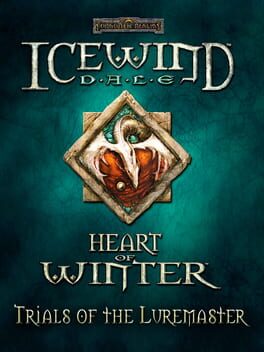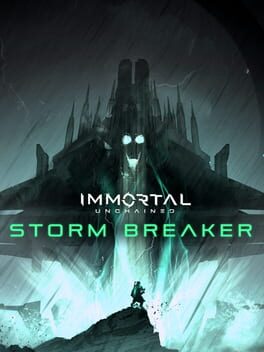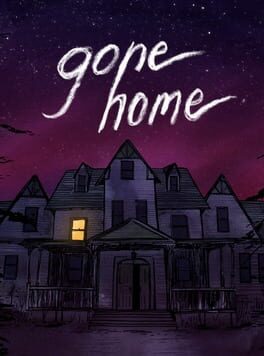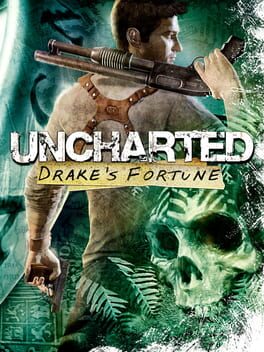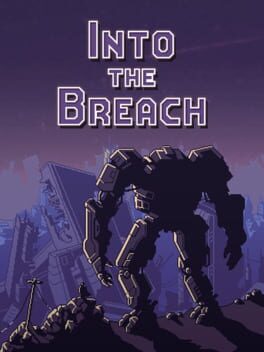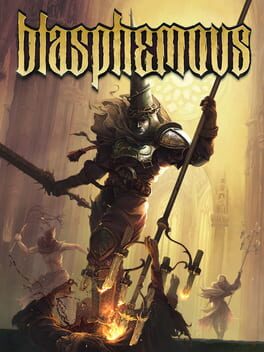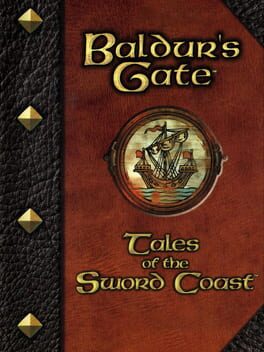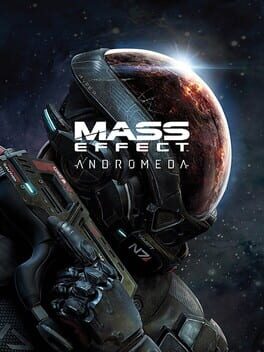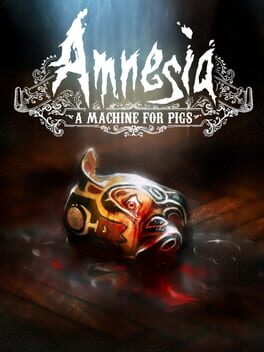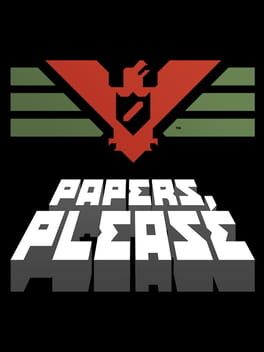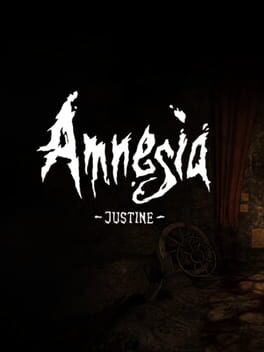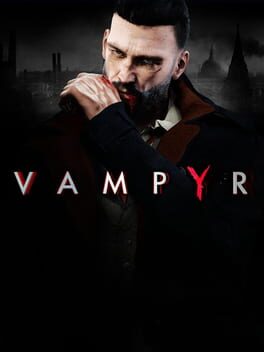squid0812
BACKER
The rarest of breeds: an expansion-within-an-expansion. In the mythical days of yore when a 10-15 hour expansion was somehow considered too short, Black Isle Studios added this utterly extraneous mini-module onto Icewind Dale’s Heart of Winter expansion as a mea culpa. As previously implied, this has literally nothing to do with the narrative of the aforementioned expansion or the base game - instead, your party is unceremoniously and involuntarily teleported to a fort in the middle of the desert to be ‘tested’ by the titular villain. Despite the jarringly disconnected nature of the premise, this isn’t without some minor successes. The dungeon design, as in most of Icewind Dale, is largely quite strong. In fact, the addition of some elementary puzzles, mostly absent in the main game, feels like a straight-up improvement. For roughly the first third or so, the enemy mobs feel appropriately (rather than relentlessly) challenging.
Sadly, this gentle difficulty curve doesn’t last. Once you enter the main keep, the game reverts back to attrition mode. The latter parts of this expansion are even more unforgiving than the hardest parts of the main game. It feels like there is an enemy encounter designed to push your party to its breaking point every two minutes. I respect and even enjoy the crunchiness of 2nd Edition D and D, but when it’s this unrelenting, I just get exhausted. Mercifully, the actual Luremaster himself is a fairly straightforward final boss. The grind to reach him is borderline-intolerable, though.
Sadly, this gentle difficulty curve doesn’t last. Once you enter the main keep, the game reverts back to attrition mode. The latter parts of this expansion are even more unforgiving than the hardest parts of the main game. It feels like there is an enemy encounter designed to push your party to its breaking point every two minutes. I respect and even enjoy the crunchiness of 2nd Edition D and D, but when it’s this unrelenting, I just get exhausted. Mercifully, the actual Luremaster himself is a fairly straightforward final boss. The grind to reach him is borderline-intolerable, though.
For all its obvious flaws, the main campaign of Immortal: Unchained actually showed a good amount of promise in laying out a path forward for Souls-style shooters. Unfortunately, the DLC doubled down on some of the very worst gameplay elements from the main game. The whole experience is an overly hostile slog, jam-packed with enemies whose tankiness and damage output are extremely excessive (there is even one new enemy that literally can’t be killed unless you hit one specific, pixel-sized spot that is only occasionally exposed). It’s to the point where it feels like the only option is to either run or cheese your way through. Which doesn’t leave much time to take in the new levels - a shame, considering the dried out sea bed and sunken ships offer a fairly interesting new biome in a game full of generic tech hallways.
The final boss of the DLC is almost good, but suffers from two issues, one of which is basically unforgivable: the encounter starts with a very tough, wave-based fight against regular enemies that you have to repeat every time you try to kill the boss (in case it wasn’t clear, this is tedious and awful). Also, the boss himself is about 20% too fast for the game’s engine - I knew the moves and how to deal with them, but sometimes my guy simply didn’t move out of the way quickly enough. It’s deeply frustrating to have your avatar skill fail to match up with player skill.
Ultimately, this is a DLC that is discouraging more than anything else. The makers of I:U had some cool ideas about how to take Soulslike gameplay and meld it with third person shooter mechanics. Unfortunately, it appears with this DLC that the devs bought into the toxic, ‘git gud’, difficulty-fuck messaging that emanates from the worst corners of Souls fandom.
The final boss of the DLC is almost good, but suffers from two issues, one of which is basically unforgivable: the encounter starts with a very tough, wave-based fight against regular enemies that you have to repeat every time you try to kill the boss (in case it wasn’t clear, this is tedious and awful). Also, the boss himself is about 20% too fast for the game’s engine - I knew the moves and how to deal with them, but sometimes my guy simply didn’t move out of the way quickly enough. It’s deeply frustrating to have your avatar skill fail to match up with player skill.
Ultimately, this is a DLC that is discouraging more than anything else. The makers of I:U had some cool ideas about how to take Soulslike gameplay and meld it with third person shooter mechanics. Unfortunately, it appears with this DLC that the devs bought into the toxic, ‘git gud’, difficulty-fuck messaging that emanates from the worst corners of Souls fandom.
2013
Minor spoilers below!
Polarizing yet undeniably influential, Gone Home is a work that I have a lot of conflicting feelings about. I know that I enjoy experiencing what it has to offer. I just don’t know if I am enjoying it as a game.
The actual process of exploring this odd, slightly unsettling mansion remains compelling throughout the short runtime (brevity was a crucial choice by the devs; other similar games that run longer, like Firewatch, always end up dragging). A big part of why the exploration works is how the devs completely nailed the vibe of what it was like to be alive in the 90s. This is certainly subject to one’s personal experiences, but many of the details (making cassette tapes for friends, using TV guide to find something to watch, reading physical copies of magazines, etc.) contribute to a feeling of verisimilitude that really hooked me into the setting. Base nostalgia perhaps, but it hooked me nonetheless.
From a gameplay(?) perspective, I enjoyed the core loop of gathering notes and objects from around the house and trying to imagine how the information you learn fleshes out the setting. Some people hate this type of activity in games, but I almost invariably have a sweet spot for it (this is also my favorite part of more action-oriented games like Bioshock and Dishonored). This game is quite clever in using the different tidbits you find around the house to contribute to an overall narrative. The subplot concerning the parents and their marital problems, for instance, would seem cliched if the whole story was simply told within a single set piece. But because the player is progressively piecing together different parts of the story through exploration, this seemingly trite and simplistic mini-narrative takes on a much more sophisticated emotional cadence: disappointment over the mother’s potential infidelity, relief when the player discovers the parents are away on an anniversary getaway, renewed disappointment when it’s discovered that the aforementioned anniversary trip is really just cover for a last-ditch attempt to save the marriage via a couple’s retreat. This is far from the only time the game does something like this (there’s one brilliant bit in which a seemingly simple self-exhortation on the dad’s bulletin board is re-contextualized as a reflection of deep-seated resentment between father and son). The game succeeded in making me feel clever every time this happened - the aha moments abound in a way that is rare and special.
The main attraction here, though, is the PC’s sister Samantha and her romance with a girl named Lonnie. It’s a sweet if predictable story that leans a lot on Sarah Grayson’s superb voice acting. It doesn’t entirely avoid the cliches of teenage romance stories, but it’s undeniably sincere, which goes a long way for me. It does have problems, however. Lonnie, for example, is a bit of a cipher. There are scattered hints about how she has an unsettled family life and there’s one lovely anecdote about how she defaced own her locker in solidarity with Samantha, but I never really got a firm grasp on who she is beyond her romantic relationship. Still, Sam is well-developed and sympathetic enough as a character to bear the weight of the narrative - the sisterly farewell at the end of the game leaves a bittersweet taste that really sticks for me.
Now to the point I really struggle with on Gone Home: Is this a game? Games need tension, even if it’s operating at a basic level. When you play a Mario game, however lighthearted it is, there is an elementary tension between the player’s desire to reach the end of the level and the possibility of falling down a hole or getting killed by a goomba. Having played through Gone Home a few times, I wondered for awhile where the tension was. I think it’s there, even if it’s only in the most threadbare way. The tension here is between the player’s desire to learn as much as possible about this sad and broken family and the player’s predilection (or lack thereof) for thorough exploration. Hilariously, you can finish Gone Home in less than a minute, skipping every single note outside of the one that triggers the end of the game. This is obviously an extreme case, but it’s still very possible in a conventional play-through to miss a number of very important details and / or misunderstand key subplots if you aren’t exploring in detail. Explore so that you don’t miss story content - there’s the tension. Admittedly, that’s pretty thin. But ultimately I do think this is a game. And a good one at that.
Then again, considering how much of a rant this was, you should probably try it and figure it out for yourself!
Polarizing yet undeniably influential, Gone Home is a work that I have a lot of conflicting feelings about. I know that I enjoy experiencing what it has to offer. I just don’t know if I am enjoying it as a game.
The actual process of exploring this odd, slightly unsettling mansion remains compelling throughout the short runtime (brevity was a crucial choice by the devs; other similar games that run longer, like Firewatch, always end up dragging). A big part of why the exploration works is how the devs completely nailed the vibe of what it was like to be alive in the 90s. This is certainly subject to one’s personal experiences, but many of the details (making cassette tapes for friends, using TV guide to find something to watch, reading physical copies of magazines, etc.) contribute to a feeling of verisimilitude that really hooked me into the setting. Base nostalgia perhaps, but it hooked me nonetheless.
From a gameplay(?) perspective, I enjoyed the core loop of gathering notes and objects from around the house and trying to imagine how the information you learn fleshes out the setting. Some people hate this type of activity in games, but I almost invariably have a sweet spot for it (this is also my favorite part of more action-oriented games like Bioshock and Dishonored). This game is quite clever in using the different tidbits you find around the house to contribute to an overall narrative. The subplot concerning the parents and their marital problems, for instance, would seem cliched if the whole story was simply told within a single set piece. But because the player is progressively piecing together different parts of the story through exploration, this seemingly trite and simplistic mini-narrative takes on a much more sophisticated emotional cadence: disappointment over the mother’s potential infidelity, relief when the player discovers the parents are away on an anniversary getaway, renewed disappointment when it’s discovered that the aforementioned anniversary trip is really just cover for a last-ditch attempt to save the marriage via a couple’s retreat. This is far from the only time the game does something like this (there’s one brilliant bit in which a seemingly simple self-exhortation on the dad’s bulletin board is re-contextualized as a reflection of deep-seated resentment between father and son). The game succeeded in making me feel clever every time this happened - the aha moments abound in a way that is rare and special.
The main attraction here, though, is the PC’s sister Samantha and her romance with a girl named Lonnie. It’s a sweet if predictable story that leans a lot on Sarah Grayson’s superb voice acting. It doesn’t entirely avoid the cliches of teenage romance stories, but it’s undeniably sincere, which goes a long way for me. It does have problems, however. Lonnie, for example, is a bit of a cipher. There are scattered hints about how she has an unsettled family life and there’s one lovely anecdote about how she defaced own her locker in solidarity with Samantha, but I never really got a firm grasp on who she is beyond her romantic relationship. Still, Sam is well-developed and sympathetic enough as a character to bear the weight of the narrative - the sisterly farewell at the end of the game leaves a bittersweet taste that really sticks for me.
Now to the point I really struggle with on Gone Home: Is this a game? Games need tension, even if it’s operating at a basic level. When you play a Mario game, however lighthearted it is, there is an elementary tension between the player’s desire to reach the end of the level and the possibility of falling down a hole or getting killed by a goomba. Having played through Gone Home a few times, I wondered for awhile where the tension was. I think it’s there, even if it’s only in the most threadbare way. The tension here is between the player’s desire to learn as much as possible about this sad and broken family and the player’s predilection (or lack thereof) for thorough exploration. Hilariously, you can finish Gone Home in less than a minute, skipping every single note outside of the one that triggers the end of the game. This is obviously an extreme case, but it’s still very possible in a conventional play-through to miss a number of very important details and / or misunderstand key subplots if you aren’t exploring in detail. Explore so that you don’t miss story content - there’s the tension. Admittedly, that’s pretty thin. But ultimately I do think this is a game. And a good one at that.
Then again, considering how much of a rant this was, you should probably try it and figure it out for yourself!
2002
An excellent example of how to remake a game, with a near-perfect balance between imaginative new ideas and respect for the original. It’s stunning how little this game has aged nearly two decades after its release. It still looks fantastic, with the verisimilitude offered by higher-res graphics arguably being its number one advantage over the original game. In the 1996 Resident Evil, the seedier details of the Spencer Mansion were largely left to the player’s imagination due to technical limitations. In the remake, nearly every room and hallway has some kind of unsettling environmental detail. This is the Spencer Mansion in its full glory, as the developers must have always intended it - a puzzle box with an atmosphere of dread that is invoked whenever you turn a corner or walk through a door.
The numerous other additions and changes to the original are also to the remake’s advantage. The script has been rewritten to edit out some of the more ridiculous dialogue from the original - this still feels like a B-movie, but you’ll never have to stop and wonder if the voice actors are people randomly pulled in off the street like you did in ‘96. The story additions not only perform an admirable job of eliminating dangling threads (now we understand why this house is full of obtuse puzzles and deadly traps), but also provide a scary yet sympathetic antagonist in Lisa Trevor.
As for the gameplay elements, everything from the controls to the puzzle-solving feels smoother and more refined. Of course, some people are always going to have a distaste for the tank controls and the fixed camera angles, but if you can jive with those conceits, this is probably the aesthetic peak of that approach. Atmospheric, creepy, and tense, REmake is a great place to start for those looking to get into the ‘classic’ Resident Evil games.
The numerous other additions and changes to the original are also to the remake’s advantage. The script has been rewritten to edit out some of the more ridiculous dialogue from the original - this still feels like a B-movie, but you’ll never have to stop and wonder if the voice actors are people randomly pulled in off the street like you did in ‘96. The story additions not only perform an admirable job of eliminating dangling threads (now we understand why this house is full of obtuse puzzles and deadly traps), but also provide a scary yet sympathetic antagonist in Lisa Trevor.
As for the gameplay elements, everything from the controls to the puzzle-solving feels smoother and more refined. Of course, some people are always going to have a distaste for the tank controls and the fixed camera angles, but if you can jive with those conceits, this is probably the aesthetic peak of that approach. Atmospheric, creepy, and tense, REmake is a great place to start for those looking to get into the ‘classic’ Resident Evil games.
This review contains spoilers
None of the Uncharted games (including 4, which is relatively new) have aged particularly well, but the first entry in the series takes the cake in terms of being borderline unplayable in 2021. The charming interplay between genuinely likeable characters has always been the main draw of the series, and it’s present here as well, but everything else about this is really tough to swallow. The shooting is already bad enough, but the fact that enemies are massive bullet sponges (granted, also a problem in 2 and 3) makes every fight an interminable slog. The setting looks good for a game of this vintage, but it’s also effectively a hallway almost completely lacking in side paths and nooks that we would see in the later games.
The set pieces, so often the highlight of Uncharted games, are a mixed bag here - the bit with the U-boat stuck deep in the jungle, for instance, is a cool idea that is marred by the incredibly dumb and obvious fake death of Sully. The prison escape with Elena, in which you fight off pursuing vehicles with a machine gun mounted to the back of a jeep, is probably the best story beat and the game’s only successful gameplay switch away from the horrid third person shooting. But that small success is counterbalanced by the jet ski sequences, which are so awful that it’s unfathomable that they even made it into the game.
The story, which is a major strength in later games, is a fairly standard ripoff of Raiders of the Lost Ark, right down to the Nazis mutated by a cursed artifact. Still, the banter and chemistry between Nathan, Sully, and Elena is enjoyable, and the bumbling Eddie Raja is pretty amusing as one of villains. Stay around for the cutscenes, but don’t expect much from the gameplay until the sequels.
The set pieces, so often the highlight of Uncharted games, are a mixed bag here - the bit with the U-boat stuck deep in the jungle, for instance, is a cool idea that is marred by the incredibly dumb and obvious fake death of Sully. The prison escape with Elena, in which you fight off pursuing vehicles with a machine gun mounted to the back of a jeep, is probably the best story beat and the game’s only successful gameplay switch away from the horrid third person shooting. But that small success is counterbalanced by the jet ski sequences, which are so awful that it’s unfathomable that they even made it into the game.
The story, which is a major strength in later games, is a fairly standard ripoff of Raiders of the Lost Ark, right down to the Nazis mutated by a cursed artifact. Still, the banter and chemistry between Nathan, Sully, and Elena is enjoyable, and the bumbling Eddie Raja is pretty amusing as one of villains. Stay around for the cutscenes, but don’t expect much from the gameplay until the sequels.
2018
I should start by clarifying that I think that Into the Breach is more or less a flawless game. I docked this one star for purely personal reasons - namely, that puzzle-based strategy games like these generally don’t mesh with my tastes. I have immense respect for this game’s design, yet I can’t quite find it in me to love it. Thus I ended up as a person who played this for 25-30 hours and moved on instead of one of the numerous people I’ve seen online who continue to put in hundreds or even thousands of hours.
The general hook is fine enough (especially true if you are more into mechs and / or kaiju than I am): you guide a team of mechs in grid-based battles against giant alien bugs called Vek. As with the best strategy puzzlers, what at first seems simple is in fact deceptively complex. The degree of complexity is deep without being over-complicated or obtuse. Most impressive of all, much of the game’s complexity is determined by player opt-in. There’s the typical choice of difficulty level, sure, but you can also choose to proceed to the final fight having beaten only two of the game’s four islands (having trouble with the Ice Island?? Being stuck doesn’t mean that you can’t still beat the game). As you play more, you can also unlock different mech squads, with varying levels of difficulty based on the squad’s abilities. I find the base squad well-balanced and appropriately challenging to play with, but those looking to pilot a different strategy (i.e. damage over time, using movement abilities, inflicting status effects, etc.) will have plenty of options. You will also progressively unlock new mech pilots who have unique perks throughout the game. Some perks, like the ability to move after firing on an enemy, are straight-up overpowered, while others are more specialized. Choosing islands, mech squads, pilots, and upgrades makes for an very impressive array of interesting decisions for each run-through. It also makes for a game that has probably the best example of player-selected difficulty that I know of. When I just wanted a quick, relaxing run, I would choose my preferred mech squad, the best available pilots, and probably finish out with the final fight after only two islands. On the other hand, when I wanted a challenge, I could test out a newer squad, take some of the harder-to-use pilots, and try play through all four islands before the finale. The degree to which the game allows you make it quick and breezy or punishing and tense depending on player preference is genuinely outstanding.
I know I’ve talked a lot about difficulty - logically enough, that’s because this game is hard. Thankfully, it’s hard in a satisfying way. This is a game that will force you to make sacrifices to achieve your goal. You will run into situations (especially on higher difficulties), where you will be forced to put your best pilot in the path of a killing blow in order to save the mission. This can produce a lot of tension, but it never became frustrating for me. I think the key to this is that the game gives you perfect knowledge of what the enemy will do on their next move. Now, this might seem like an unfair advantage for the player - it is the rough equivalent of knowing what your opponent’s next move will be in chess, after all. But having this information is actually necessary for the game to work, because the enemy is stronger than you. The Vek have more units, more movement capabilities, and sometimes more health or damage capability than the mechs - the only way make these advantages not seem totally unfair is to offer the player clear information about what they will do next. It ends up working so well - again, I can’t really overstate the sense of tension that this game generates without ever tipping over into frustration.
Puzzlers and strategy are not my thing. Doubly true for mechs and kaiju. But Into the Breach’s beautifully tuned mechanics ultimately made me toss aside my reservations. It’s a hell of a game, one that even a skeptic like me can’t help but recommend.
The general hook is fine enough (especially true if you are more into mechs and / or kaiju than I am): you guide a team of mechs in grid-based battles against giant alien bugs called Vek. As with the best strategy puzzlers, what at first seems simple is in fact deceptively complex. The degree of complexity is deep without being over-complicated or obtuse. Most impressive of all, much of the game’s complexity is determined by player opt-in. There’s the typical choice of difficulty level, sure, but you can also choose to proceed to the final fight having beaten only two of the game’s four islands (having trouble with the Ice Island?? Being stuck doesn’t mean that you can’t still beat the game). As you play more, you can also unlock different mech squads, with varying levels of difficulty based on the squad’s abilities. I find the base squad well-balanced and appropriately challenging to play with, but those looking to pilot a different strategy (i.e. damage over time, using movement abilities, inflicting status effects, etc.) will have plenty of options. You will also progressively unlock new mech pilots who have unique perks throughout the game. Some perks, like the ability to move after firing on an enemy, are straight-up overpowered, while others are more specialized. Choosing islands, mech squads, pilots, and upgrades makes for an very impressive array of interesting decisions for each run-through. It also makes for a game that has probably the best example of player-selected difficulty that I know of. When I just wanted a quick, relaxing run, I would choose my preferred mech squad, the best available pilots, and probably finish out with the final fight after only two islands. On the other hand, when I wanted a challenge, I could test out a newer squad, take some of the harder-to-use pilots, and try play through all four islands before the finale. The degree to which the game allows you make it quick and breezy or punishing and tense depending on player preference is genuinely outstanding.
I know I’ve talked a lot about difficulty - logically enough, that’s because this game is hard. Thankfully, it’s hard in a satisfying way. This is a game that will force you to make sacrifices to achieve your goal. You will run into situations (especially on higher difficulties), where you will be forced to put your best pilot in the path of a killing blow in order to save the mission. This can produce a lot of tension, but it never became frustrating for me. I think the key to this is that the game gives you perfect knowledge of what the enemy will do on their next move. Now, this might seem like an unfair advantage for the player - it is the rough equivalent of knowing what your opponent’s next move will be in chess, after all. But having this information is actually necessary for the game to work, because the enemy is stronger than you. The Vek have more units, more movement capabilities, and sometimes more health or damage capability than the mechs - the only way make these advantages not seem totally unfair is to offer the player clear information about what they will do next. It ends up working so well - again, I can’t really overstate the sense of tension that this game generates without ever tipping over into frustration.
Puzzlers and strategy are not my thing. Doubly true for mechs and kaiju. But Into the Breach’s beautifully tuned mechanics ultimately made me toss aside my reservations. It’s a hell of a game, one that even a skeptic like me can’t help but recommend.
2019
A flawed game with one particular aspect that stands out as S-tier: the astounding pixel art, which is possibly the best I’ve ever encountered in games. Whatever type of imagery you prefer, this game has it: the creepy, the surreal, the ineffable. A giant, blindfolded baby with bleeding eyes. A floating head pockmarked with scars and exposed brain matter. These are just a few of the more jaw-dropping examples in a game that is full of this kind of stuff. Even if this isn’t your type of game, you owe it to yourself to check out some screenshots - it really is that good.
Alas, every other part of the game registered as just OK for me. The combat is fun enough, but it’s also rather simplistic. Nearly everything that isn’t a standard attack, dodge, or parry feels tangential or only situationally useful. The various Metroidvania upgrades are all exploration-based and thus never play a role in combat as sometimes happens in other games of this ilk (i.e. Hollow Knight). Fundamentally, the combat moveset at the beginning of the game is very similar to the moveset at the end. It’s fine, there’s just not a lot of movement.
I feel similarly ambivalent about the platforming and exploration. I love the way the dodge feels in this game, but the jumping always felt a bit off for reasons I can’t describe. It didn’t happen a lot, but there were definitely times when I missed a jump or mantle that I felt like I should’ve had. Normally, I wouldn’t consider this a big deal, but when instant death spikes are in play (why?), even trivial amounts of platforming jank are unacceptable. Most of the really tough platforming is in optional areas, so at least there’s that. Speaking of which, there are plenty of cool, optional secrets here - illusory walls and riddles abound. Unfortunately, a lot of what you find are meaningless Kickstarter collectibles - this game sort of has a desperate need for more useful items that give you a reason to fully explore its world. It doesn’t help that your character never picks up any movement upgrades - I kept hoping to pick up a double jump or air dash that would make it more fun on a moment-to-moment basis to backtrack and scout out the map for secrets.
The stellar imagery and oppressive mood were enough to keep me going here - but a follow-up with some gameplay and story refinements (more direct storytelling and a little less figurative / lyrical mumbo-jumbo might help the plot stick a bit more) has the potential for greatness.
Alas, every other part of the game registered as just OK for me. The combat is fun enough, but it’s also rather simplistic. Nearly everything that isn’t a standard attack, dodge, or parry feels tangential or only situationally useful. The various Metroidvania upgrades are all exploration-based and thus never play a role in combat as sometimes happens in other games of this ilk (i.e. Hollow Knight). Fundamentally, the combat moveset at the beginning of the game is very similar to the moveset at the end. It’s fine, there’s just not a lot of movement.
I feel similarly ambivalent about the platforming and exploration. I love the way the dodge feels in this game, but the jumping always felt a bit off for reasons I can’t describe. It didn’t happen a lot, but there were definitely times when I missed a jump or mantle that I felt like I should’ve had. Normally, I wouldn’t consider this a big deal, but when instant death spikes are in play (why?), even trivial amounts of platforming jank are unacceptable. Most of the really tough platforming is in optional areas, so at least there’s that. Speaking of which, there are plenty of cool, optional secrets here - illusory walls and riddles abound. Unfortunately, a lot of what you find are meaningless Kickstarter collectibles - this game sort of has a desperate need for more useful items that give you a reason to fully explore its world. It doesn’t help that your character never picks up any movement upgrades - I kept hoping to pick up a double jump or air dash that would make it more fun on a moment-to-moment basis to backtrack and scout out the map for secrets.
The stellar imagery and oppressive mood were enough to keep me going here - but a follow-up with some gameplay and story refinements (more direct storytelling and a little less figurative / lyrical mumbo-jumbo might help the plot stick a bit more) has the potential for greatness.
The island of werewolves (or is it wolfweres?) is simply a few extra maps of standard Baldur's Gate side questing - which is to say it's enjoyable and worth your time without being especially revelatory.
The addition that makes this expansion truly stand out, though, is Durlag's Tower, which is arguably still the greatest prestige dungeon that BioWare has ever created, even after Baldur's Gate II and a bevy of Dragon Age and Mass Effect games. Six floors jam-packed with challenging monster encounters, thought-provoking puzzles, and plenty of evocative details and creepy atmospherics, the Tower acts as both a final exam for players to test their mastery of 2nd Edition mechanics and as an thrilling harbinger of the kind of rich and engaging side stories that are all over the place in Baldur's Gate II.
You won't lose much if you skip the Werewolf Island, but Durlag's Tower is not be missed.
The addition that makes this expansion truly stand out, though, is Durlag's Tower, which is arguably still the greatest prestige dungeon that BioWare has ever created, even after Baldur's Gate II and a bevy of Dragon Age and Mass Effect games. Six floors jam-packed with challenging monster encounters, thought-provoking puzzles, and plenty of evocative details and creepy atmospherics, the Tower acts as both a final exam for players to test their mastery of 2nd Edition mechanics and as an thrilling harbinger of the kind of rich and engaging side stories that are all over the place in Baldur's Gate II.
You won't lose much if you skip the Werewolf Island, but Durlag's Tower is not be missed.
I don't have much unique to say about this beyond the general consensus - this game is a significant disappointment (although, considering how much it takes from the equally disappointing Dragon Age: Inquisition, maybe we shouldn't have been surprised). All of the issues that mar the work of modern BioWare are here: grindy and repetitive combat, a needlessly complex loot and crafting system, an overabundance of boring and forgettable quests, and so on.
More surprising and concerning, though, are the flaws that affect areas where BioWare normally excels, like the bland and unimaginative world design and the predictable storyline. This is a game that hedged its entire appeal around exploring a new galaxy - yet none of this feels like it takes place outside the series' traditional Milky Way setting. There are only two new alien races, for example - and neither is very interesting or feels like they would be out of place in the Milky Way. The villainous kett, in particular, serve as boring and under-motivated bad guys. Outside of the rather unique tutorial planet, almost all of the worlds you visit are variations on a desert setting - there's hot desert, cold desert, irradiated desert, etc. I was taken aback by how these basically just seemed like higher-res versions of the same desolate landscapes the series featured way back in ME1. Granted, there's more to do here, but it's still mostly just bland shooting and looting. The lack of interesting new environments and alien races is one of the bigger disappointments I had with this game.
The lack of resonant characters and an engaging storyline are also major issues here. Now, I won't say the companions are awful, but I would argue that they are pretty damn uninspired. Like in previous Mass Effects, you start off with two fairly straightforward human companions (this is a series tradition I would be OK with them ditching). Cora's OK, if a little bit stuffy. Liam, on the other hand, continues the tradition of male starter companions being huge doofuses. He's basically that insufferable kid from college who thought that all that was needed to bring peace to the Middle East was a positive attitude and an open mind. He desperately wants to create peace and understanding between the people of the Milky Way and Andromeda galaxies, but as with any 'benevolent' colonialist, he's convinced that only he knows best how to do that (I won't spend much ink on that topic beyond saying that the colonialist undertones in this game are distasteful, to say the least). In short, Liam sucks.
Now, past Mass Effects have made up for the dull human characters with strong alien casts, but even here, Andromeda is lacking. Drack, for instance, is just another ornery and grizzled krogan. He offers nothing about the krogan that we didn't learn from Wrex and / or Grunt. Another example is Peebee, this game's asari companion, who is a simple and obvious inversion of Liara from the original trilogy (spunky and outgoing instead of modest and demure). Most of the alien characters are like this - instead of existing on their own terms, they feel like unimaginative retreads or straightforward tweaks on better characters from past games.
The most frustrating element of all here is that there are still distinct traces of the excellent, old school BioWare writing and scenario development. There are a number of quests that actually sound amazing on paper, like the one where you can trick a group of anti-AI extremists into thinking they successfully 'liberated' your character from the AI hardwired into their brain. Unfortunately, the gameplay loop is so limp, the dialogue so generic that even the most promising premises BioWare devised end up feeling like lost opportunities. Add that on to a main plot that has to be one of the most boring and lazy things that BioWare has ever put out, and you have a real storytelling problem here.
A depressing sign of creative ennui at a formerly great studio, methinks.
More surprising and concerning, though, are the flaws that affect areas where BioWare normally excels, like the bland and unimaginative world design and the predictable storyline. This is a game that hedged its entire appeal around exploring a new galaxy - yet none of this feels like it takes place outside the series' traditional Milky Way setting. There are only two new alien races, for example - and neither is very interesting or feels like they would be out of place in the Milky Way. The villainous kett, in particular, serve as boring and under-motivated bad guys. Outside of the rather unique tutorial planet, almost all of the worlds you visit are variations on a desert setting - there's hot desert, cold desert, irradiated desert, etc. I was taken aback by how these basically just seemed like higher-res versions of the same desolate landscapes the series featured way back in ME1. Granted, there's more to do here, but it's still mostly just bland shooting and looting. The lack of interesting new environments and alien races is one of the bigger disappointments I had with this game.
The lack of resonant characters and an engaging storyline are also major issues here. Now, I won't say the companions are awful, but I would argue that they are pretty damn uninspired. Like in previous Mass Effects, you start off with two fairly straightforward human companions (this is a series tradition I would be OK with them ditching). Cora's OK, if a little bit stuffy. Liam, on the other hand, continues the tradition of male starter companions being huge doofuses. He's basically that insufferable kid from college who thought that all that was needed to bring peace to the Middle East was a positive attitude and an open mind. He desperately wants to create peace and understanding between the people of the Milky Way and Andromeda galaxies, but as with any 'benevolent' colonialist, he's convinced that only he knows best how to do that (I won't spend much ink on that topic beyond saying that the colonialist undertones in this game are distasteful, to say the least). In short, Liam sucks.
Now, past Mass Effects have made up for the dull human characters with strong alien casts, but even here, Andromeda is lacking. Drack, for instance, is just another ornery and grizzled krogan. He offers nothing about the krogan that we didn't learn from Wrex and / or Grunt. Another example is Peebee, this game's asari companion, who is a simple and obvious inversion of Liara from the original trilogy (spunky and outgoing instead of modest and demure). Most of the alien characters are like this - instead of existing on their own terms, they feel like unimaginative retreads or straightforward tweaks on better characters from past games.
The most frustrating element of all here is that there are still distinct traces of the excellent, old school BioWare writing and scenario development. There are a number of quests that actually sound amazing on paper, like the one where you can trick a group of anti-AI extremists into thinking they successfully 'liberated' your character from the AI hardwired into their brain. Unfortunately, the gameplay loop is so limp, the dialogue so generic that even the most promising premises BioWare devised end up feeling like lost opportunities. Add that on to a main plot that has to be one of the most boring and lazy things that BioWare has ever put out, and you have a real storytelling problem here.
A depressing sign of creative ennui at a formerly great studio, methinks.
1998
Something of a quantum leap forward for the Resident Evil series. The RPD may lack the iconic reputation of the Spencer Mansion from the original game, but in every other aspect - level design, scope, environmental detail - it’s a significant upgrade.
This is also a much more cinematic experience - it keeps the campy sense of schlock but ditches the cheap voice acting and FMV of the original game. Consequently, the set pieces are shockingly effective - from the first licker appearance, to Chief Irons giving his deranged villain speech with the dead body of the mayor’s daughter draped over his desk, to nearly every sequence involving Mr. X, RE2 really nails multiple shades of creepiness and tension in a way that’s rare for any game, let alone one from the PS1 era.
One way that this game didn’t really change from the original Resident Evil is in the gameplay - it’s still principally about solving a series of relatively simple puzzles, fighting off zombies and other monsters, and managing inventory slots as you explore a confined space. I openly acknowledge that tastes will vary here - some people really can’t stand the tank controls and fixed camera angles. I, for one, love the gameplay of early Resident Evil. Exploring a space that’s been stricken by catastrophe, improvising on the fly in order to conserve resources, blowing zombie heads clean off with sweet, sonorous shotgun blasts - all of these are gaming tropes that I am huge sucker for, and this game has them in spades.
Of course, some elements of this game haven’t aged well. The zapping system was meant to add a wrinkle to the inventory management as you played through the game with each character - but the choices it involves are so slight that the effect is barely noticeable. Add on the fact that many parts of the story make no sense if you choose to play Leon A / Claire B, and I’m inclined to label this system a dud. Also, the sequences in which the player controls a character other than Leon or Claire are annoying (if mercifully short) slogs.
Still, whatever its flaws, RE2 was where Resident Evil crossed the line from being an intriguing diversion to being one of my all-time favorite game franchises. Having replayed this fairly recently as a point of comparison with the (superb) remake, I can testify that this game holds up exceedingly well. Not to be missed.
This is also a much more cinematic experience - it keeps the campy sense of schlock but ditches the cheap voice acting and FMV of the original game. Consequently, the set pieces are shockingly effective - from the first licker appearance, to Chief Irons giving his deranged villain speech with the dead body of the mayor’s daughter draped over his desk, to nearly every sequence involving Mr. X, RE2 really nails multiple shades of creepiness and tension in a way that’s rare for any game, let alone one from the PS1 era.
One way that this game didn’t really change from the original Resident Evil is in the gameplay - it’s still principally about solving a series of relatively simple puzzles, fighting off zombies and other monsters, and managing inventory slots as you explore a confined space. I openly acknowledge that tastes will vary here - some people really can’t stand the tank controls and fixed camera angles. I, for one, love the gameplay of early Resident Evil. Exploring a space that’s been stricken by catastrophe, improvising on the fly in order to conserve resources, blowing zombie heads clean off with sweet, sonorous shotgun blasts - all of these are gaming tropes that I am huge sucker for, and this game has them in spades.
Of course, some elements of this game haven’t aged well. The zapping system was meant to add a wrinkle to the inventory management as you played through the game with each character - but the choices it involves are so slight that the effect is barely noticeable. Add on the fact that many parts of the story make no sense if you choose to play Leon A / Claire B, and I’m inclined to label this system a dud. Also, the sequences in which the player controls a character other than Leon or Claire are annoying (if mercifully short) slogs.
Still, whatever its flaws, RE2 was where Resident Evil crossed the line from being an intriguing diversion to being one of my all-time favorite game franchises. Having replayed this fairly recently as a point of comparison with the (superb) remake, I can testify that this game holds up exceedingly well. Not to be missed.
This review contains spoilers
An intriguing if messy story and some cool atmospherics unfortunately don't make up for the fact that the developers basically stripped away all of the mechanics that made the original Amnesia such a rich gameplay experience. The removal of the darkness / sanity meter and of the entire inventory system might seem forgivable during the creepy and unsettling intro, but these mechanical reductions actually have major ripple effects. The lack of an inventory, for instance, basically eliminates the possibility of having any remotely interesting puzzles, instead replacing them with minor tasks that are at best inconsequential (at worst, they downright waste your time and insult your intelligence). There's no point, for example, in a machine having missing gears if the piece you need to find is on the floor literally right next the machine - these are just dull, half-hearted attempts at adding some gameplay to what is effectively a walking sim. Infuriatingly, the game is also filled with drawers and locked doors - but there is almost never anything interesting or useful to find in them. The first game made exploration worth it by sprinkling tinderboxes and key items throughout the levels - you received a mechanical benefit for exploring. In A Machine for Pigs, you will occasionally find a lore note, but otherwise, there is nothing to discover. So instead of exploring, you mostly just stay on the rails - unlike with the original, every playthrough of this game will be more or less exactly the same. It all contributes to a sense that little thought was put into giving this game even a simple degree of mechanical complexity, and that this would have been better off as a movie rather than a game.
STORY SPOILERS BELOW!!!!!!
What joy I did derive from A Machine for Pigs definitely came from the story and atmosphere. The sound design is outstanding once again, and a number of the set pieces are quite disturbing (the manpig nest is a standout). The writing is consistently above average, as well. Unfortunately, even this area of relative strength isn't without its flaws. Your character's stated motivation, for example, is to find and save his children - but if you haven't guessed that his kids are dead within the first five minutes of the game, then I can only assume that you have never seen a horror movie in your life. There is definitely some unintentional hilarity that results from your character running around shouting about how he will save his boys 90% of the way through the game - even though he has been having visions of them ripping their own hearts out and has read at least two lore notes that explicitly refer to the fact that he already murdered them himself...
Another weird plot beat that is left mostly unexplained - what exactly is the machine's plan? To release a bunch of manpigs to take over the world? Not a great plan (and from a gameplay perspective, this is made worse by the fact that the manpigs simply are not very scary). I actually was really into the idea that main character was traumatized into building a literal deus ex machina after experiencing a future vision of the horrors of the 20th century, but man, some of the plot developments that spring from this idea really miss the mark.
As you can probably guess from the three star rating, I did manage to derive some enjoyment from some of the unsettling environmental details and set pieces. Still, this game can only be called a disappointment when compared with its predecessor (although playing this did make me appreciate The Dark Descent more, at the very least).
STORY SPOILERS BELOW!!!!!!
What joy I did derive from A Machine for Pigs definitely came from the story and atmosphere. The sound design is outstanding once again, and a number of the set pieces are quite disturbing (the manpig nest is a standout). The writing is consistently above average, as well. Unfortunately, even this area of relative strength isn't without its flaws. Your character's stated motivation, for example, is to find and save his children - but if you haven't guessed that his kids are dead within the first five minutes of the game, then I can only assume that you have never seen a horror movie in your life. There is definitely some unintentional hilarity that results from your character running around shouting about how he will save his boys 90% of the way through the game - even though he has been having visions of them ripping their own hearts out and has read at least two lore notes that explicitly refer to the fact that he already murdered them himself...
Another weird plot beat that is left mostly unexplained - what exactly is the machine's plan? To release a bunch of manpigs to take over the world? Not a great plan (and from a gameplay perspective, this is made worse by the fact that the manpigs simply are not very scary). I actually was really into the idea that main character was traumatized into building a literal deus ex machina after experiencing a future vision of the horrors of the 20th century, but man, some of the plot developments that spring from this idea really miss the mark.
As you can probably guess from the three star rating, I did manage to derive some enjoyment from some of the unsettling environmental details and set pieces. Still, this game can only be called a disappointment when compared with its predecessor (although playing this did make me appreciate The Dark Descent more, at the very least).
2013
Seemingly a simple game with limited scope that really sneaks up on you with its unique ability to repeatedly make you feel like a complete monster. This is a ‘message game’ par excellence, one that expertly manipulates the player into making heinous moral choices with the mere ‘ka-chunk’ of a customs stamp. You play as a border official in a fictionalized totalitarian state, navigating an ever-growing list of arcane rules as you attempt to correctly process heaps of paperwork. Mixing scripted events with procedurally generated border crossings, the moment-to-moment play is focused on management of the cluttered desk on which you have to shuffle about the numerous papers you’re checking. As you engage with this system more and more, the processing develops an almost hypnotic quality. Shifting different papers about, stamping passports, and calling in guards (among other things) all become second nature. Indeed, one of the most brilliant parts of this game is how subtle details in the sound design and the booth interface make these processes feel both satisfying and true to life.
Of course, from a thematic standpoint, all the paperwork is just a smokescreen. As you get into a rhythm of robotically and efficiently processing entries, the game starts to present you with increasingly complex and diverse moral dilemmas - a wife who is missing the paperwork required to accompany her husband, a human trafficker who has proper documentation but who will undoubtedly commit terrible crimes if admitted into the country, and so on. You can always choose to do the right thing, but it nearly always leads to significant, employer-imposed financial penalties (or sometimes the triggering of a fail state) for your character and their family. I was frequently taken aback by how this game lulled me into a state where the efficient operation of my repetitive one man assembly line took precedence over treating the people in the booth with humanity and respect. Which, of course, is the point. A frightening testament to how ethical landmines can be hidden within a bureaucratic swamp of paperwork and regulations, this is actually one of the most unsettling games I’ve played. I wouldn’t necessarily call it fun, but I would call it essential.
Of course, from a thematic standpoint, all the paperwork is just a smokescreen. As you get into a rhythm of robotically and efficiently processing entries, the game starts to present you with increasingly complex and diverse moral dilemmas - a wife who is missing the paperwork required to accompany her husband, a human trafficker who has proper documentation but who will undoubtedly commit terrible crimes if admitted into the country, and so on. You can always choose to do the right thing, but it nearly always leads to significant, employer-imposed financial penalties (or sometimes the triggering of a fail state) for your character and their family. I was frequently taken aback by how this game lulled me into a state where the efficient operation of my repetitive one man assembly line took precedence over treating the people in the booth with humanity and respect. Which, of course, is the point. A frightening testament to how ethical landmines can be hidden within a bureaucratic swamp of paperwork and regulations, this is actually one of the most unsettling games I’ve played. I wouldn’t necessarily call it fun, but I would call it essential.
2011
An abjectly terrifying mini-expansion for the first Amnesia game. I was more or less delighted by how well this utilizes a number of interesting tweaks to the gameplay ideas of the main game in a such a short timeframe (this takes no more than an hour to play). Everything you liked about the main game is here, just turned up to 11: the brilliant sound design is somehow even more atmospheric and dread-inducing, the puzzles are tough as hell (unintuitively so, in one unfortunate case), and the monster design and environmental details are even more creepy (you can bet I won’t forget what the word ‘abacinate’ means any time soon). The story, although brief, is quite clever, as it hinges on a mind-bending twist that brings a new meaning to the term ‘masochist.’
I docked this for two unfortunate demerits that prevent this from being a perfect little expansion. If you die, not only is your game over, but you hilariously get booted to desktop. This isn’t a huge deal for most of the expansion, but it is not a reach to die during the panic of the final chase sequence. A save function seems like it would’ve been a pretty simple add. Second, the puzzle in the library is a real momentum-killer, an illogical dud that had me stuck for way too long.
On the whole, however, this is a tight and well-imagined DLC, arguably even scarier than the main game on a moment-to-moment basis.
I docked this for two unfortunate demerits that prevent this from being a perfect little expansion. If you die, not only is your game over, but you hilariously get booted to desktop. This isn’t a huge deal for most of the expansion, but it is not a reach to die during the panic of the final chase sequence. A save function seems like it would’ve been a pretty simple add. Second, the puzzle in the library is a real momentum-killer, an illogical dud that had me stuck for way too long.
On the whole, however, this is a tight and well-imagined DLC, arguably even scarier than the main game on a moment-to-moment basis.
A very fun, if uneven, Batman simulator.
This is a game that leans heavily on its beat-em-up combat for its much of its appeal. Thankfully, this system is a stunning success. The way that Batman zips around the room delivering blows as you build up a combo feels amazing, and the addition of batarangs and some basic combo finishers brings a needed smidge of complexity. Mostly though, this breaks down to Batman punching a lot of random thugs in the face - and it’s really a testament to how well it works that nearly every moment you spend doing this is a joy.
Adjacent to the superb combat, the game also does a decent job of simulating Batman-style stealth. As long as you can accept the idea that the bad guys will never choose to simply look up, then swinging around rooms picking off enemies is pretty satisfying (it’s helped by some first-rate barks - listening to Mark Hamill’s Joker taunt his panicked henchmen is consistently hilarious). Considering that a large chunk of the game consists of traversing stealth rooms, it was important that the developers got it right. It’s not necessarily perfect - I kept on wishing for a smoke bomb or some other option that would let me re-enter stealth after getting caught - but the developers ultimately added just enough variety to the stealth scenarios to keep them engaging throughout the game.
The game only really runs into trouble when it breaks off of its core gameplay loop of stealth and brawling. The bosses, for instance, are almost all terrible (the wonderfully unsettling Scarecrow encounters are an exception). I was fine with fighting one boring ‘toro’ boss, but to repeat that same encounter throughout the game ad nauseam is unconscionable. Even when the game mercifully breaks out of this repetition, the results tend to be poor (the janky and formulaic Poison Ivy fight is another lowlight).
This is more of a personal bugbear, but I also find the overwhelming preponderance of pointless collectibles to be a big problem here. The Riddler trophies can be safely ignored, sure. But these empty pieces of fluff actually have a really deleterious impact on the world design. When I first played this, I was excited by the potential Metroidvania elements that were apparent early on in the game. As the game proceeded, though, it quickly became apparent that the only real reward for backtracking with new abilities is racking up Riddler trophies - which is to say, there’s no reward at all. I admire that they wanted to make a Batman game about exploration, but games about exploration thrive on the novelty of finding cool stuff, which is largely missing here. The interview tapes and Arkham seals are fine additions for flavor, but they are so rare in comparison to the Riddler trophies that I just ended up staying on the rails rather than going off the beaten path. Again, this game works fine as a linear experience, so it’s not a death knell, but the promise of opportunities to explore ended up ringing hollow in a way that was disappointing.
I realize I’m sounding significantly more negative than I actually am about this game - I replayed this fairly recently and it remains a lot of fun over a decade after its release. It just doesn’t hold a candle to Arkham City, and there are a few flaws that stick out like a sore thumb (I didn’t even mention the story, which hinges on a dumbfounding misinterpretation of what is cool and interesting about the Joker). Still, an important game, with a persistent tactile brilliance that makes it pretty easy to look past its problems.
This is a game that leans heavily on its beat-em-up combat for its much of its appeal. Thankfully, this system is a stunning success. The way that Batman zips around the room delivering blows as you build up a combo feels amazing, and the addition of batarangs and some basic combo finishers brings a needed smidge of complexity. Mostly though, this breaks down to Batman punching a lot of random thugs in the face - and it’s really a testament to how well it works that nearly every moment you spend doing this is a joy.
Adjacent to the superb combat, the game also does a decent job of simulating Batman-style stealth. As long as you can accept the idea that the bad guys will never choose to simply look up, then swinging around rooms picking off enemies is pretty satisfying (it’s helped by some first-rate barks - listening to Mark Hamill’s Joker taunt his panicked henchmen is consistently hilarious). Considering that a large chunk of the game consists of traversing stealth rooms, it was important that the developers got it right. It’s not necessarily perfect - I kept on wishing for a smoke bomb or some other option that would let me re-enter stealth after getting caught - but the developers ultimately added just enough variety to the stealth scenarios to keep them engaging throughout the game.
The game only really runs into trouble when it breaks off of its core gameplay loop of stealth and brawling. The bosses, for instance, are almost all terrible (the wonderfully unsettling Scarecrow encounters are an exception). I was fine with fighting one boring ‘toro’ boss, but to repeat that same encounter throughout the game ad nauseam is unconscionable. Even when the game mercifully breaks out of this repetition, the results tend to be poor (the janky and formulaic Poison Ivy fight is another lowlight).
This is more of a personal bugbear, but I also find the overwhelming preponderance of pointless collectibles to be a big problem here. The Riddler trophies can be safely ignored, sure. But these empty pieces of fluff actually have a really deleterious impact on the world design. When I first played this, I was excited by the potential Metroidvania elements that were apparent early on in the game. As the game proceeded, though, it quickly became apparent that the only real reward for backtracking with new abilities is racking up Riddler trophies - which is to say, there’s no reward at all. I admire that they wanted to make a Batman game about exploration, but games about exploration thrive on the novelty of finding cool stuff, which is largely missing here. The interview tapes and Arkham seals are fine additions for flavor, but they are so rare in comparison to the Riddler trophies that I just ended up staying on the rails rather than going off the beaten path. Again, this game works fine as a linear experience, so it’s not a death knell, but the promise of opportunities to explore ended up ringing hollow in a way that was disappointing.
I realize I’m sounding significantly more negative than I actually am about this game - I replayed this fairly recently and it remains a lot of fun over a decade after its release. It just doesn’t hold a candle to Arkham City, and there are a few flaws that stick out like a sore thumb (I didn’t even mention the story, which hinges on a dumbfounding misinterpretation of what is cool and interesting about the Joker). Still, an important game, with a persistent tactile brilliance that makes it pretty easy to look past its problems.
2018
Vampyr is an intriguing if unpolished vampire RPG where the primary draw is building relationships with the many citizens (there are over 60) of London, before deciding whether you want to murder them and drink their blood for XP. All against the backdrop of the flu-ridden England of 1918 (a very cool setting that unfortunately gets a bit fatiguing, considering 3 out of 4 regions in the game are slums with few distinguishing characteristics).
Alas, it’s a cool concept that doesn’t really mesh with the storyline. In fact, the story ended up being my main problem with this game - it’s a clunky and generic tale of ancient evil and tainted blood (vampire story staples) that features a romance subplot which is very tacked-on and out of left field. Interacting with the citizens almost seems like it is part of a different game, so little does it have to do with overarching plot. Which is too bad, because interacting with the citizens is a lot of fun. You can use a variety of means to find out their backstories, which are occasionally rote but more frequently are pleasantly surprising. Almost all of the quality storytelling in this game is in the character work, not the main storyline. And the mechanic of having to choose whether you will get more powerful by killing off citizens or try to help stabilize the city by healing the sick is a fantastic role playing concept.
The last major element of the gameplay is the combat, a very light take on the standard Souls style that has a rubbed a lot of people the wrong way. I actually rather liked the way it felt, however. The main issue for me ended up being fatigue due to a lack of enemy variety. You spend most of the game fighting feral quasi-vampires called Skals or standard human guards. They are a few variants of each, but I felt like I had seen all the game had to offer enemy-wise from a very early point.
On the whole, this is a very flawed game that is built on some very interesting ideas. A more refined follow-up would have the potential for greatness.
Alas, it’s a cool concept that doesn’t really mesh with the storyline. In fact, the story ended up being my main problem with this game - it’s a clunky and generic tale of ancient evil and tainted blood (vampire story staples) that features a romance subplot which is very tacked-on and out of left field. Interacting with the citizens almost seems like it is part of a different game, so little does it have to do with overarching plot. Which is too bad, because interacting with the citizens is a lot of fun. You can use a variety of means to find out their backstories, which are occasionally rote but more frequently are pleasantly surprising. Almost all of the quality storytelling in this game is in the character work, not the main storyline. And the mechanic of having to choose whether you will get more powerful by killing off citizens or try to help stabilize the city by healing the sick is a fantastic role playing concept.
The last major element of the gameplay is the combat, a very light take on the standard Souls style that has a rubbed a lot of people the wrong way. I actually rather liked the way it felt, however. The main issue for me ended up being fatigue due to a lack of enemy variety. You spend most of the game fighting feral quasi-vampires called Skals or standard human guards. They are a few variants of each, but I felt like I had seen all the game had to offer enemy-wise from a very early point.
On the whole, this is a very flawed game that is built on some very interesting ideas. A more refined follow-up would have the potential for greatness.
